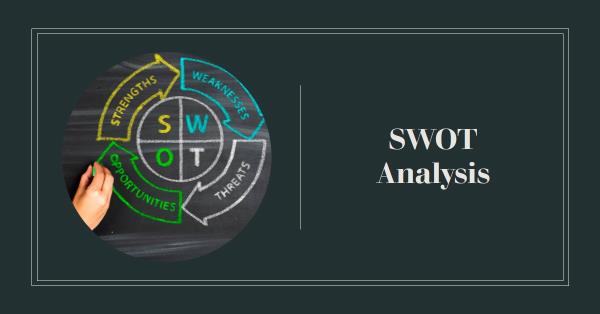SWOT analysis is a widely used tool in strategic planning to assess the strengths, weaknesses, opportunities, and threats of a business. It provides an overview of the internal and external factors that can affect a company’s performance, enabling managers to make informed decisions about resource allocation, goal setting, and overall strategy.
Definition of SWOT Analysis
SWOT analysis is a tool used to assess the strengths, weaknesses, opportunities, and threats of a business. It involves a comprehensive analysis of internal factors such as the company’s resources, capabilities, and culture, as well as external factors such as market trends, competition, and regulatory environment. The goal of a SWOT analysis is to identify the key factors that can affect the performance of a business and develop a strategy that leverages its strengths and opportunities while minimizing its weaknesses and threats.
Strengths
Strengths refer to the internal factors that give a business a competitive advantage over its competitors. This can include resources such as talented employees, proprietary technology, or strong brand recognition.
Weaknesses
Weaknesses refer to the internal factors that limit a business’s ability to compete effectively in the market. This can include factors such as lack of financial resources, outdated technology, or weak management.
Opportunities
Opportunities refer to the external factors that can create a competitive advantage for a business. This can include factors such as changes in consumer behavior, emerging markets, or regulatory changes.
Threats
Threats refer to the external factors that can negatively impact a business’s performance. This can include factors such as economic downturns, changes in consumer preferences, or new competitors in the market.
Examples of SWOT Analysis
Strength: Talented Employees
Weakness: Limited Financial Resources
Opportunity: Growing Demand for Innovative Products
Threat: Intense Competition from Established Players
In this example, a startup company has talented employees who are capable of developing innovative products. However, the company has limited financial resources and faces intense competition from established players in the market. The growing demand for innovative products presents an opportunity for the company to gain market share and overcome its financial limitations.
Strength: Strong Brand Recognition
Weakness: Outdated Technology
Opportunity: Growing Demand for E-commerce
Threat: Increased Competition from Online Retailers
In this example, a retail company has strong brand recognition but relies on outdated technology to manage its operations. The growing demand for e-commerce presents an opportunity for the company to expand its online presence and gain market share. However, increased competition from online retailers poses a threat to the company’s traditional brick-and-mortar business model.
Case Studies
McDonald’s:
McDonald’s is a company that has successfully used SWOT analysis to develop its strategy. One of McDonald’s strengths is its brand recognition and global reach. However, the company has faced criticism for its unhealthy food offerings and lack of diversity in its menu. In response, McDonald’s has invested in menu innovation to cater to changing consumer preferences and improve its public image.
Tesla:
Tesla is a company that has used SWOT analysis to identify opportunities and overcome threats. One of Tesla’s strengths is its focus on sustainability and innovative technology. However, the company faces threats from established players in the automotive industry and regulatory challenges. To address these threats, Tesla has developed new partnerships, such as with Panasonic for battery production, and invested in expanding its manufacturing capabilities to meet growing demand.
Conclusion
SWOT analysis is a powerful tool for assessing a business’s strengths, weaknesses, opportunities, and threats. By analyzing internal and external factors, businesses can develop a strategy that leverages its strengths and opportunities while mitigating its weaknesses and threats. The case studies mentioned above illustrate how companies such as McDonald’s and Tesla have successfully used SWOT analysis to improve their performance and develop their strategies.
When conducting a SWOT analysis, it is important to involve key stakeholders and gather input from multiple perspectives to ensure a comprehensive assessment. It is also essential to prioritize the identified factors and develop a clear action plan to address them.
SWOT analysis is not a one-time exercise and should be revisited regularly to ensure that the strategy remains relevant and responsive to changes in the market and business environment. By using SWOT analysis as a continuous tool, businesses can stay competitive and adapt to the ever-changing landscape of their industries.

